Themed collection Celebrating ten years of Journal of Materials Chemistry A

Introducing the tenth anniversary issues of Journal of Materials Chemistry A, B and C
Past and present Editors-in-Chief and Editorial Board Chairs introduce the 10th anniversary issues of Journal of Materials Chemistry A, B and C, reflecting on the rich history of the journals and looking ahead to the exciting future of materials chemistry.

J. Mater. Chem. A, 2023,11, 12423-12424
https://doi.org/10.1039/D3TA90064A
Microporous metal–organic frameworks for the purification of propylene
The latest advancement in developing MOF adsorbents for effective separation and purification of propylene from propane is summarized, with a focus on molecular exclusion based separation mechanism and propane-selective adsorption.
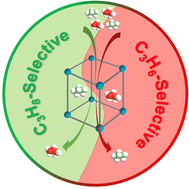
J. Mater. Chem. A, 2023,11, 12425-12433
https://doi.org/10.1039/D2TA09326J
Giant caloric effects in charge–spin–lattice coupled transition-metal oxides
Giant caloric effects found in NdCu3Fe4O12 and BiCu3Cr4O12 are highlighted. The details of the giant caloric effects in the novel charge–spin–lattice coupled transition-metal oxides are summarized and the mechanism of the effects is discussed.

J. Mater. Chem. A, 2023,11, 12695-12702
https://doi.org/10.1039/D2TA09186K
Redox-active oxygen in oxides: emergent applications, including field-induced resistive switching, flash luminescence, p–n junctions and high capacity battery cathodes
Oxide ions are traditionally regarded as forming the inert anion sub-lattice of oxide structures whose properties are largely dominated by the cations present.

J. Mater. Chem. A, 2023,11, 12681-12694
https://doi.org/10.1039/D3TA00202K
Molecular designs, synthetic strategies, and properties for porphyrins as sensitizers in dye-sensitized solar cells
Dyes play a crucial role in the cell performance of dye-sensitized solar cells (DSSCs), and versatile synthetic strategies towards well-tailored porphyrins for DSSCs have been developed for achieving high photovoltaic performances.

J. Mater. Chem. A, 2023,11, 12659-12680
https://doi.org/10.1039/D2TA09264F
Covalent organic framework and hydrogen-bonded organic framework for solar-driven photocatalysis
The features of COF and HOF in porosity, light harvesting, and structural multifunctionality enable their application for photocatalysis. Focusing on the existing merits, rational developing way is helpful for constructing more excellent porous photocatalyst.
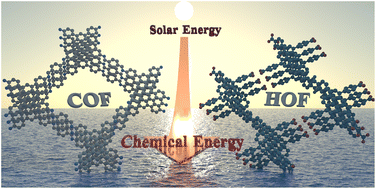
J. Mater. Chem. A, 2023,11, 12521-12538
https://doi.org/10.1039/D2TA09375H
Solar driven CO2 reduction: from materials to devices
Solar driven CO2 reduction is a promising technology for achieving carbon neutrality. The optimized photo-absorber, catalyst and device and their synergistic operation are essential for realizing a highly efficient solar driven CO2 reduction system.

J. Mater. Chem. A, 2023,11, 12499-12520
https://doi.org/10.1039/D3TA00267E
Regulating the electronic structure of single-atom catalysts for electrochemical energy conversion
We provide comprehensive analyses of various methods to regulate the electronic structure of single-atom catalysts, which have shown great promise for optimizing electrochemical energy conversion efficiency.

J. Mater. Chem. A, 2023,11, 12643-12658
https://doi.org/10.1039/D3TA00156C
Hybrid polymer gels for energy applications
This review deals with hybrid polymer gels, presently and significantly used for low-cost and high performance solar cells, fuel cells, solid state batteries and supercapacitors with high stability, flexibility and stimuli-responsiveness.

J. Mater. Chem. A, 2023,11, 12593-12642
https://doi.org/10.1039/D2TA09525D
Halide perovskite quantum dots for photocatalytic CO2 reduction
This review focuses on halide perovskite quantum dots (QDs) for photocatalytic CO2 reduction, discussing the structures and properties of perovskite QDs, the mechanism for CO2 reduction, photocatalyst design, challenges and directions for future research.

J. Mater. Chem. A, 2023,11, 12482-12498
https://doi.org/10.1039/D2TA09521A
Advances in harvesting water and energy from ubiquitous atmospheric moisture
Sorbent-assisted AWH and moisture-enabled energy generation are reviewed in parallel to reveal the correlation between these two technologies.

J. Mater. Chem. A, 2023,11, 12456-12481
https://doi.org/10.1039/D2TA09552A
Versatile carbon superstructures for energy storage
The design strategies and underlying mechanisms of versatile carbon superstructures for energy storage are reviewed. Current challenges and development roadmaps are proposed to spur the further exploration of carbon superstructures.

J. Mater. Chem. A, 2023,11, 12434-12455
https://doi.org/10.1039/D2TA09258A
A comparative overview of MXenes and metal oxides as cocatalysts in clean energy production through photocatalysis
The performance of metal oxide and MXene cocatalysts for the photocatalytic conversion of H2O, CO2 and N2 over semiconductors are summarised and compared.

J. Mater. Chem. A, 2023,11, 12559-12592
https://doi.org/10.1039/D2TA08983A
Highly selective semiconductor photocatalysis for CO2 reduction
Herein, to provide ideas for the design of highly selective CO2 reduction materials, we introduce each step of the photocatalytic CO2 reduction process and summarize how each step is adjusted to promote the selectivity of CO2 reduction.

J. Mater. Chem. A, 2023,11, 12539-12558
https://doi.org/10.1039/D2TA09234D
Enhanced photocatalytic hydrogen production of microporous organic polymers by incorporation of afterglow phosphorescent materials
The hydrogen evolution efficiency of MOP-based photocatalysts was enhanced with the aid of afterglow phosphorescent materials.
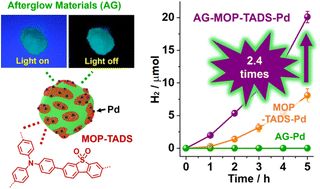
J. Mater. Chem. A, 2023,11, 12719-12725
https://doi.org/10.1039/D3TA02348F
Urethane functions can reduce metal salts under hydrothermal conditions: synthesis of noble metal nanoparticles on flexible sponges applied in semi-automated organic reduction
Noble metal nanoparticles anchored on flexible polyurethane foams were synthesized by hydrothermal synthesis. Through employing a robotic arm, these ‘catalytic sponges’ were used for organic reductions towards automated lab-scale organic synthesis.

J. Mater. Chem. A, 2023,11, 12703-12712
https://doi.org/10.1039/D2TA09405C
High-areal-capacity anode-free all-solid-state lithium batteries enabled by interconnected carbon-reinforced ionic-electronic composites
A three-dimensional carbon-reinforced ionic-electronic composite (CRIEC) boosts the cycling areal capacities of working anode-free all-solid-state lithium batteries.

J. Mater. Chem. A, 2023,11, 12713-12718
https://doi.org/10.1039/D3TA00121K
High ionic conducting rare-earth silicate electrolytes for sodium metal batteries
Sodium gadolinium silicate solid electrolyte showed an outstanding sodium plating/stripping performance for 1000 cycles that proves excellent interfacial contact between the sodium anode and solid electrolyte.

J. Mater. Chem. A, 2023,11, 15792-15801
https://doi.org/10.1039/D3TA02128A
Influence of synthesis and substitution on the structure and ionic transport properties of lithium rare earth metal halides
A series of Li3MI6 compounds with M = Lu–Sm were produced by ball milling and solid state synthesis. Cation disorder within the layers largely influences the ionic transport properties, which can be tuned by isovalent and aliovalent substitution.

J. Mater. Chem. A, 2023,11, 13027-13038
https://doi.org/10.1039/D3TA01327H
Interdiffused thermoplastic urethane-PEDOT:PSS bilayers with superior adhesion properties for high-performance and intrinsically-stretchable organic solar cells
Highly efficient (PCE = 13.1%) and stretchable (strain at PCE80% = 34%) IS-OSCs are developed using a molecular interdiffusion-assisted TPU-PEDOT:PSS bilayers with excellent adhesion properties.

J. Mater. Chem. A, 2023,11, 12846-12855
https://doi.org/10.1039/D2TA09874A
Anion-polarisation-directed short-range-order in antiperovskite Li2FeSO
Anion polarisation in heterocationic Li2FeSO stabilises polar anion coordination in opposition to the predictions from simple point-charge electrostatics. This behaviour gives local configurational under-constraint and causes long-range disorder.

J. Mater. Chem. A, 2023,11, 13016-13026
https://doi.org/10.1039/D2TA10037A
PVA–FeCl3 composites as substrate and packaging materials for the controlled degradation of non-degradable metals in transient electronics
We present a PVA–FeCl3 composite as a substrate and packaging material that can initiate the controlled dissolution of non-transient metals such as Al and Cu in water.

J. Mater. Chem. A, 2023,11, 12999-13006
https://doi.org/10.1039/D2TA09507F
Nanoparticle exsolution via electrochemical switching in perovskite fibers for solid oxide fuel cell electrodes
Metal nanoparticles supported on powder and fiber perovskites via exsolution. The fiber shows a weight loss about 4.4 times higher than the powder sample. These have been applied in solid oxide fuel cell configuration.

J. Mater. Chem. A, 2023,11, 13007-13015
https://doi.org/10.1039/D3TA00535F
Highly controllable and reproducible one-step synthesis of β-NaYF4:Er3+@NaYbF4@NaYF4 upconversion nanoparticles for Sb2(S,Se)3 solar cells with enhanced efficiency
Monodisperse β-NaYF4:Er3+@NaYbF4@NaYF4 upconversion nanoparticles are synthesized using a one-step thermal decomposition process and further incorporated into the hole transporting layer to improve the efficiency of Sb2(S,Se)3 solar cells.

J. Mater. Chem. A, 2023,11, 12992-12998
https://doi.org/10.1039/D3TA00241A
Nonionic oligo(ethylene glycol)-substituted viologen negolytes for aqueous organic redox flow batteries
Oligo(ethylene glycol) (OEG)-substituted viologens enable superior cycling stability of the first-electron redox reaction and accessibility of the second-electron energy storage in aqueous organic redox flow batteries (AORFBs).

J. Mater. Chem. A, 2023,11, 12984-12991
https://doi.org/10.1039/D2TA09177A
N2 adsorption on high-entropy alloy surfaces: unveiling the role of local environments
A theoretical framework and analysis are presented that can be generally used for any complex material surface where an adsorption or interaction at single sites can be modulated by the electronic structure of the local environment.

J. Mater. Chem. A, 2023,11, 12973-12983
https://doi.org/10.1039/D2TA09348K
Stabilizing Ni-rich high energy cathodes for advanced lithium-ion batteries: the case of LiNi0.9Co0.1O2
Lithiated oxides like Li[NixCoyMnz]O2 (x + y + z = 1) with high nickel content (x ≥ 0.8) can possess high specific capacity ≥200 mA h g−1 and have attracted extensive attention as perspective cathode materials for advanced lithium-ion batteries.

J. Mater. Chem. A, 2023,11, 12958-12972
https://doi.org/10.1039/D3TA00444A
Anin situ hyperconnective network strategy to prepare lanthanum zirconate nanofiber membranes with superior flexibility and toughness
Lanthanum zirconate nanofiber membranes with superior flexibility, toughness and high-temperature resistance can be obtained by an in situ hyper-connective network strategy.
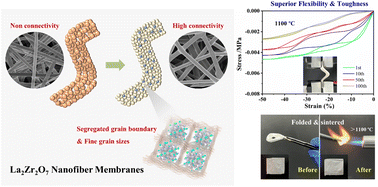
J. Mater. Chem. A, 2023,11, 12735-12745
https://doi.org/10.1039/D2TA09347B
High-quality single-walled carbon nanotube films as current collectors for flexible supercapacitors
High-quality single-walled carbon nanotube films are promising current collectors for flexible supercapacitors.

J. Mater. Chem. A, 2023,11, 12941-12949
https://doi.org/10.1039/D2TA09396K
Tailoring the electronic structure of In2O3/C photocatalysts for enhanced CO2 reduction
A series of transition metal-doped In2O3/C photocatalysts are synthesized by a feasible bimetallic MOF template strategy. The investigation demonstrates that Cu–In2O3/C significantly enhances performance for photoreduction of CO2 to CO.

J. Mater. Chem. A, 2023,11, 12950-12957
https://doi.org/10.1039/D2TA09236K
Discovery of thermosetting polymers with low hygroscopicity, low thermal expansivity, and high modulus by machine learning
Based on the workflow of the materials genome approach, the challenge of enhancing multiple conflicting properties of an advanced thermosetting polymer of polycyanurates was addressed through high-throughout screening using machine learning.

J. Mater. Chem. A, 2023,11, 12918-12927
https://doi.org/10.1039/D2TA09272G
Probing single-chain conformation and its impact on the optoelectronic properties of donor–accepter conjugated polymers
The optoelectronic properties of a given conjugated polymer depend on the chain rigidity and more importantly local chain planarity. The local backbone planarity determines the conjugation length as large twists result in break of conjugation.
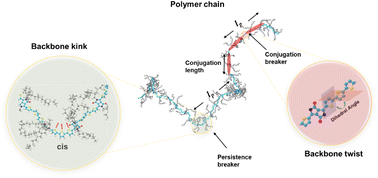
J. Mater. Chem. A, 2023,11, 12928-12940
https://doi.org/10.1039/D2TA09389H
Engineering pore nanospaces by introducing aromatic effects in UiO-66 for efficient separation of light hydrocarbons
A pore-nanospace-engineering strategy has been developed to construct a series of UiO-66-type Zr-MOFs by introducing different aromatic linkers. UiO-66-Naph exhibits the best C2H6/C3H8 light hydrocarbon separation performance from CH4.

J. Mater. Chem. A, 2023,11, 12902-12909
https://doi.org/10.1039/D2TA09338C
Improving and degrading the oxygen exchange kinetics of La0.6Sr0.4CoO3−δ by Sr decoration
i-PLD measurements reveal beneficial effects of SrO at high temperatures and detrimental effects of CO2 adsorbates at low temperatures.

J. Mater. Chem. A, 2023,11, 12827-12836
https://doi.org/10.1039/D2TA09362F
A 3D lithiophilic ZIF-8@RGO free-standing scaffold with dendrite-free behavior enabling high-performance Li metal batteries
A proof-of-concept of a combination of unimpeded 3D electron transport pathways and abundant lithiophilic N/Zn sites has been demonstrated to concurrently tackle the growth of dendritic Li and infinity-dimension changes.

J. Mater. Chem. A, 2023,11, 12910-12917
https://doi.org/10.1039/D2TA09316B
Increasing the limits of energy and safety in tetrazoles: dioximes as unusual precursors to very thermostable and insensitive energetic materials
Unusual thermostable and insensitive high-energy compounds which contain dioximes with donor–acceptor H-bond sites, were synthesized from glyoxal (40% in water) in straightforward steps.

J. Mater. Chem. A, 2023,11, 12896-12901
https://doi.org/10.1039/D2TA09324C
Modulation of CO2 adsorption thermodynamics and selectivity in alkali-carbonate activated N-rich porous carbons
In this paper we activate carbons from precursors of varying nitrogen content with different activating cations. The charge density of the cation helped to tune material properties and influence CO2 adsorption thermodynamics.

J. Mater. Chem. A, 2023,11, 12811-12826
https://doi.org/10.1039/D2TA09376F
S-doped C3N5 derived from thiadiazole for efficient photocatalytic hydrogen evolution
Novel structured thiadiazole-attached carbon nitrides are first synthesized via sintering 5-amino-1,3,4-thiadiazole-2-thiol, demonstrating excellent performances towards photocatalytic H2 evolution under visible light irradiation.

J. Mater. Chem. A, 2023,11, 12837-12845
https://doi.org/10.1039/D3TA00318C
Encapsulated C12A7 electride material enables a multistep electron transfer process for cross-coupling reactions
A multistep electron transfer process is realized over C12A7:e− electride composite material. The graphene promotes electron transfer from C12A7:e− through surface Pd to the aryl halide substrates, affording a series of cross-coupling reactions.
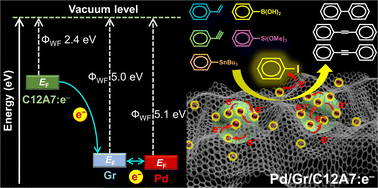
J. Mater. Chem. A, 2023,11, 12802-12810
https://doi.org/10.1039/D2TA08899A
High thermoelectric performance in entropy-driven Ge1−2x−yPbxSnxSbyTe
An ultrahigh zT of 2.5 at 723 K is achieved in an entropy driven Ge0.84Pb0.025Sn0.025Sb0.11Te sample showing a promising output power density (PDmax) of ∼590 mW cm−2 at ΔT = 448 K in a fabricated double leg device.

J. Mater. Chem. A, 2023,11, 12793-12801
https://doi.org/10.1039/D2TA09075A
An artificial neural network using multi-head intermolecular attention for predicting chemical reactivity of organic materials
A new type of artificial neural network to predict the reaction rate constant from two molecular structures. An explainable model was constructed using the multi-head intermolecular attention technique.

J. Mater. Chem. A, 2023,11, 12784-12792
https://doi.org/10.1039/D2TA07660H
Tailoring stability, catalytic activity and selectivity of covalent metal–organic frameworks via steric modification of metal nodes
A novel and efficient strategy was developed to enhance the stability, control the catalytic activity, and improve the selectivity of Cu(I) cyclic trinuclear unit (Cu-CTU)-based metal–organic frameworks by steric modification of copper nodes.
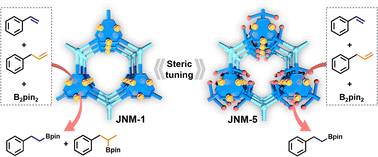
J. Mater. Chem. A, 2023,11, 12777-12783
https://doi.org/10.1039/D2TA08797A
Composite membranes consisting of acidic carboxyl-containing polyimide and basic polybenzimidazole for high-temperature proton exchange membrane fuel cells
A novel acid-base HT-PEM consisting of PI-COOH and OPBI was prepared. The OPBI-50PI-COOH composite membrane delivered superior cell performance and durability under low PA uptake due to the continuous hydrogen bond network between OPBI and PI-COOH.

J. Mater. Chem. A, 2023,11, 12885-12895
https://doi.org/10.1039/D2TA08904A
Simultaneously achieving room-temperature circularly polarized luminescence and high stability in chiral perovskite nanocrystals via block copolymer micellar nanoreactors
Perovskite nanocrystals with high chirality and stability were synthesized via chirality transfer from a chiral supramolecular nanoreactor assembled from an achiral block copolymer complexed with racemic alanine.
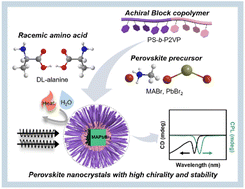
J. Mater. Chem. A, 2023,11, 12876-12884
https://doi.org/10.1039/D2TA06996B
Modulating oxygen vacancy concentration on Bi4V2O11 nanorods for synergistic photo-driven plastic waste oxidation and CO2 reduction
Synergistic photo-driven plastic waste oxidation and CO2 reduction on Bi4V2O11 nanorods with abundant oxygen vacancies.
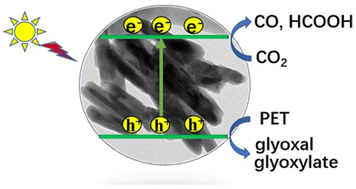
J. Mater. Chem. A, 2023,11, 12770-12776
https://doi.org/10.1039/D2TA09345F
Enhancing charge extraction in inverted perovskite solar cells contacts via ultrathin graphene:fullerene composite interlayers
Improving the perovskite/electron-transporting layer (ETL) interface is a crucial task to boost the performance of perovskite solar cells (PSCs).

J. Mater. Chem. A, 2023,11, 12866-12875
https://doi.org/10.1039/D2TA07512A
The role of ion solvation in lithium mediated nitrogen reduction
Since its verification in 2019, there have been numerous high-profile papers reporting improved efficiency of lithium-mediated electrochemical nitrogen reduction to make ammonia.

J. Mater. Chem. A, 2023,11, 12746-12758
https://doi.org/10.1039/D2TA07686A
Controlled synthesis of highly active bifunctional electrocatalysts for overall water splitting using coal-based activated carbons
N doped coal-based activated carbons, which are decorated with Ru and Ni3N nanoparticles, exhibit excellent OER/HER bifunctional activities and outstanding performance for water splitting, due to synergies of N, Ru, Ni3N and large surface areas.
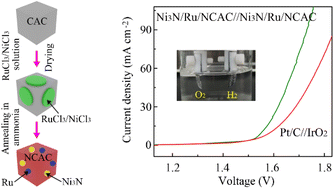
J. Mater. Chem. A, 2023,11, 12726-12734
https://doi.org/10.1039/D2TA06595A
Organic ligand-facilitated in situ exsolution of CoFe alloys over Ba0.5Sr0.5Co0.8Fe0.2O3−δ perovskite toward enhanced oxygen electrocatalysis for rechargeable Zn-air batteries
Organic ligand facilitated in situ exsolution of CoFe alloys over Ba0.5Sr0.5Co0.8Fe0.2O3 perovskite toward enhanced oxygen electrocatalysis for rechargeable Zn-air batteries.

J. Mater. Chem. A, 2023,11, 12856-12865
https://doi.org/10.1039/D2TA07104E
Enlarging the porosity of metal–organic framework-derived carbons for supercapacitor applications by a template-free ethylene glycol etching method
Enlargement of micropores in zeolitic imidazolate framework particles into mesopores is achieved via an ethylene glycol-assisted aqueous etching method. The etched carbon shows a higher specific capacitance than unetched one at high scan rates.
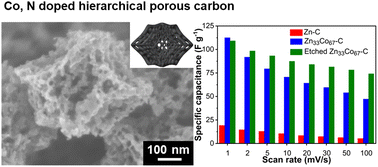
J. Mater. Chem. A, 2023,11, 12759-12769
https://doi.org/10.1039/D2TA06307G
Correction: The role of ion solvation in lithium mediated nitrogen reduction
J. Mater. Chem. A, 2023,11, 13039-13039
https://doi.org/10.1039/D3TA90009F
About this collection
We are delighted to celebrate Journal of Materials Chemistry A’s tenth anniversary in 2023!
This special issue celebrates and thanks members of our community who have supported the journal over the last ten years, and we are honoured that these authors have shared their latest discoveries with us.
Ten years ago, with the launch of the three separate titles, the vision of Journal of Materials Chemistry A, B and C was to provide venues for highly topical research in a broad range of materials chemistry and this is exemplified in the three anniversary issues, which highlight diversity in its broadest sense, across the global materials chemistry community and covering the full breadth of our discipline.
We believe that Journal of Materials Chemistry A, B and C will continue to be the home of innovative, and impactful materials chemistry research for many years to come and hope you enjoy reading the diverse range of papers featured in the anniversary issues.